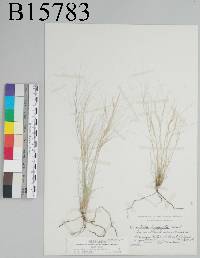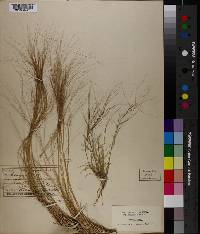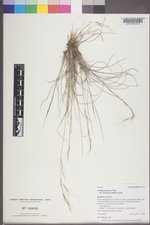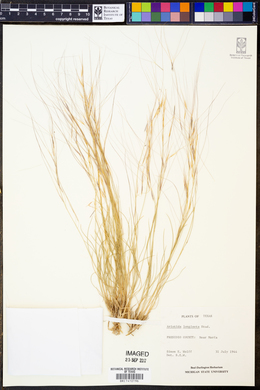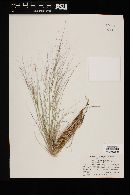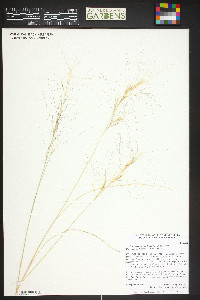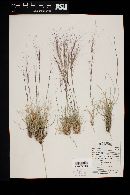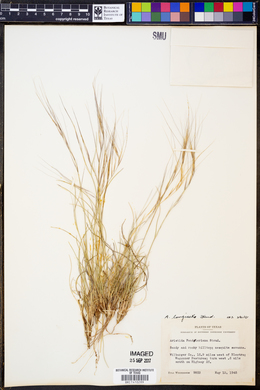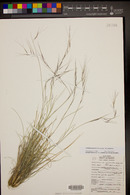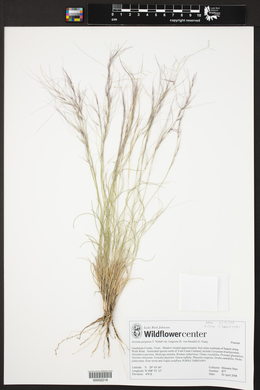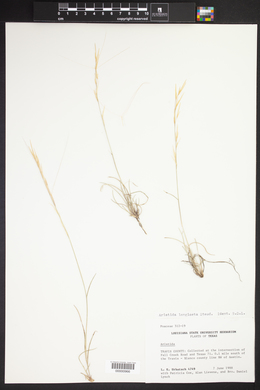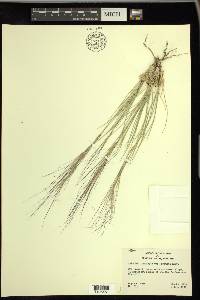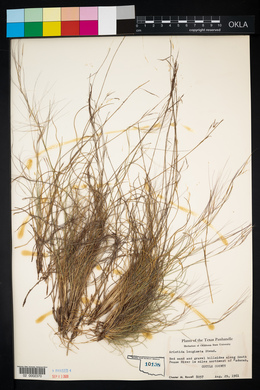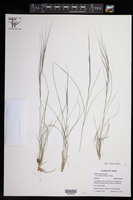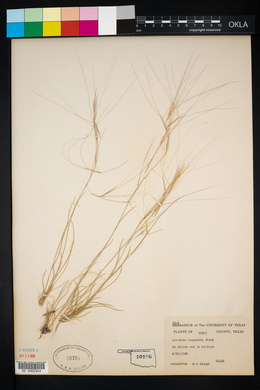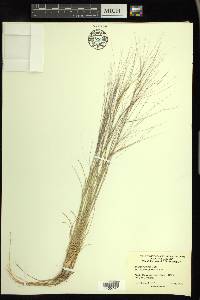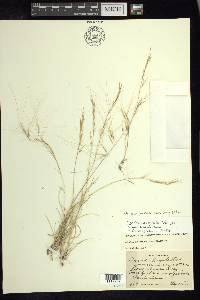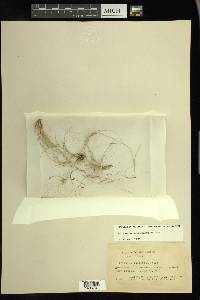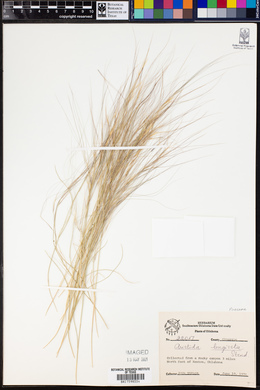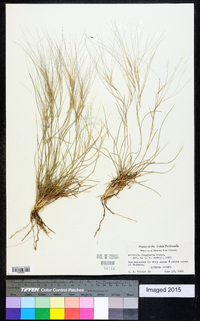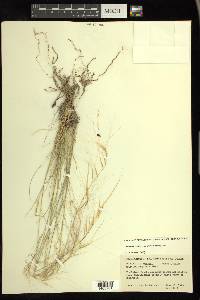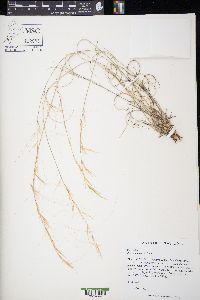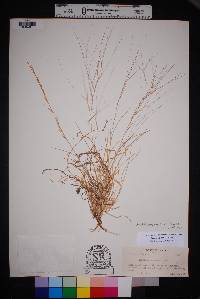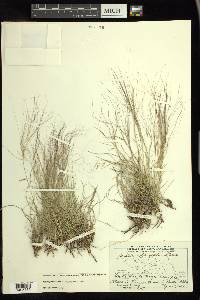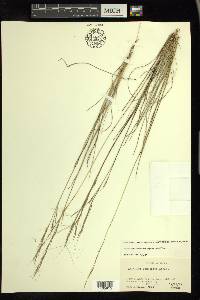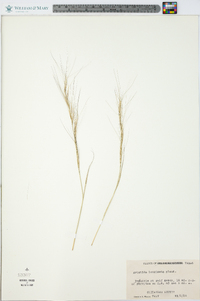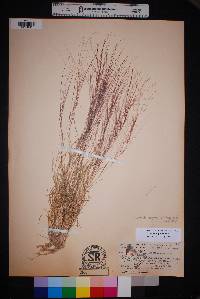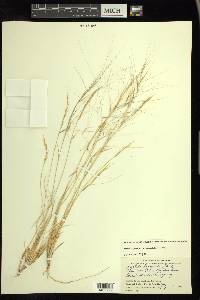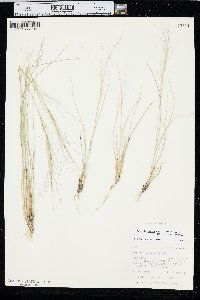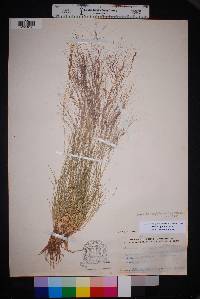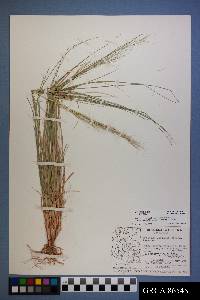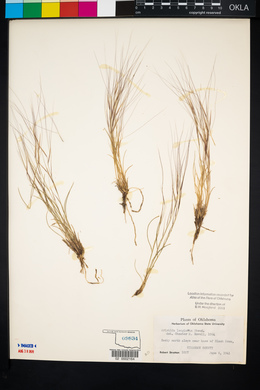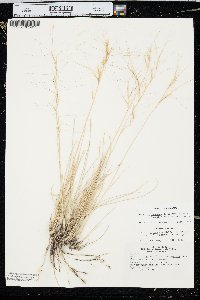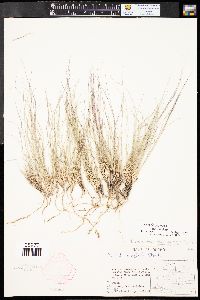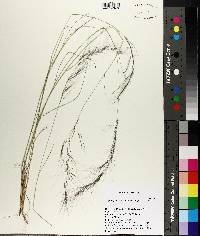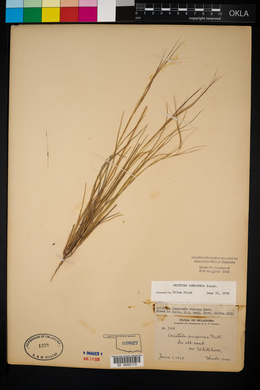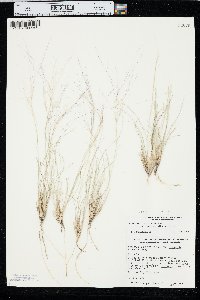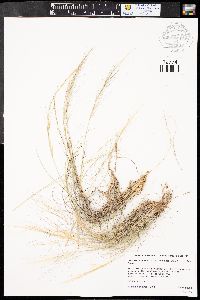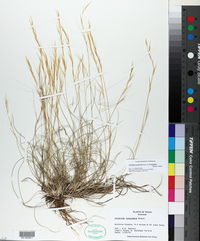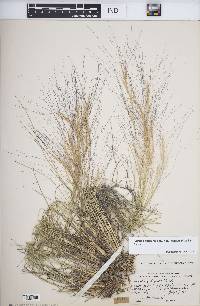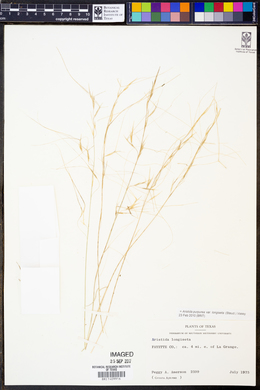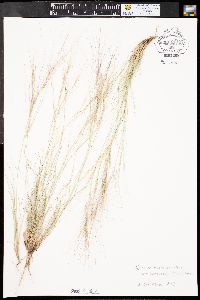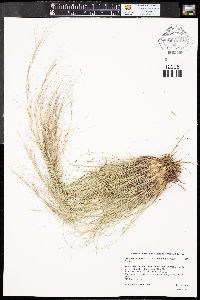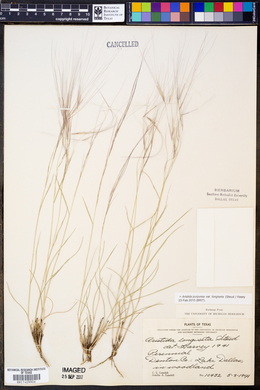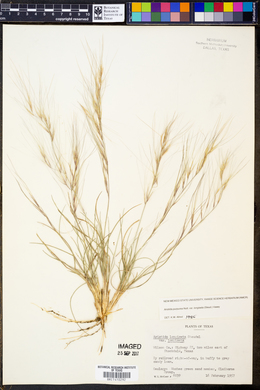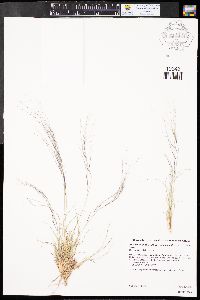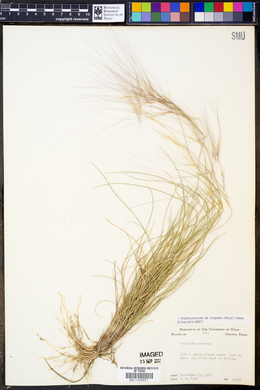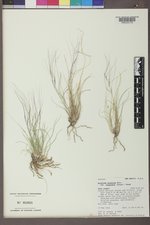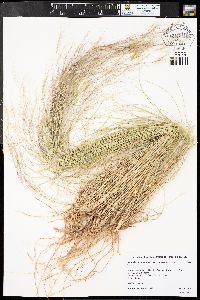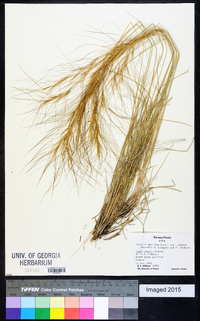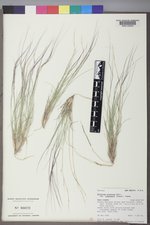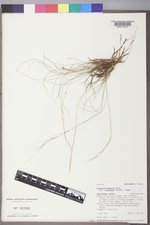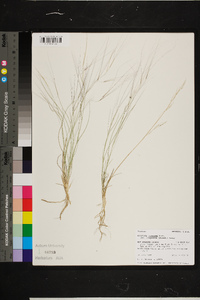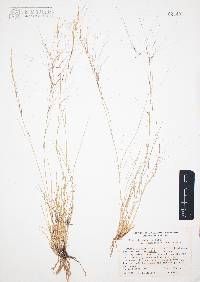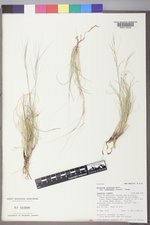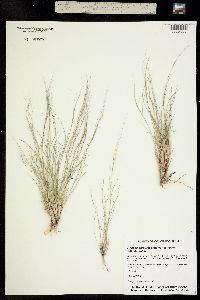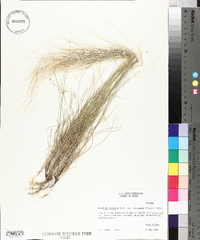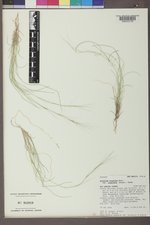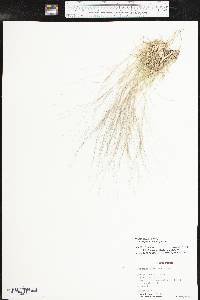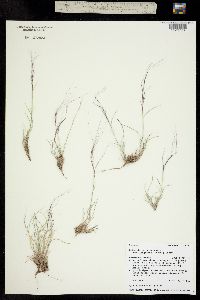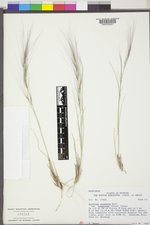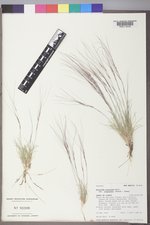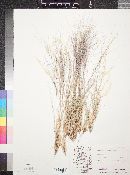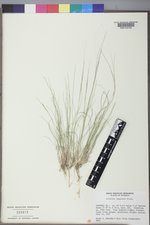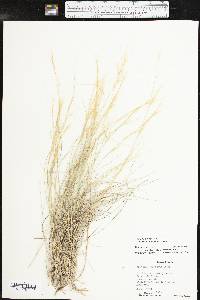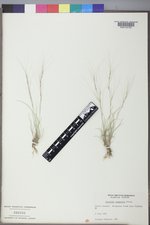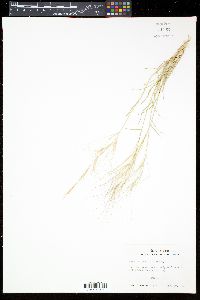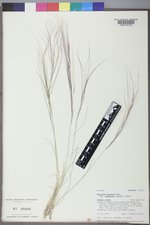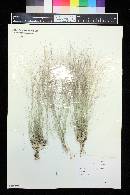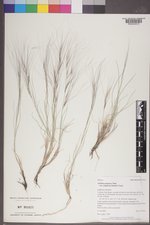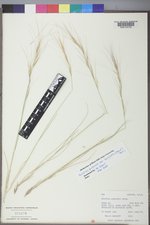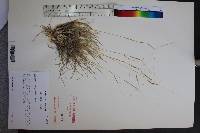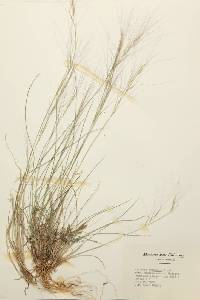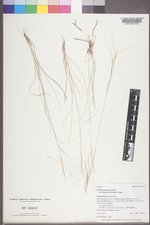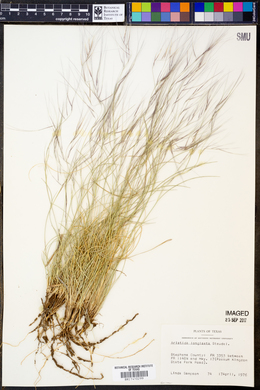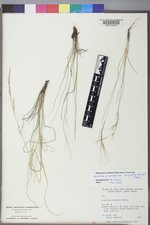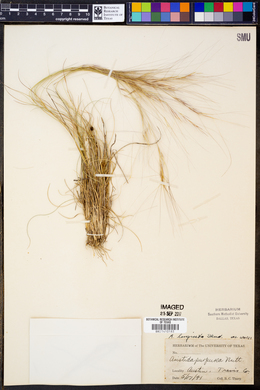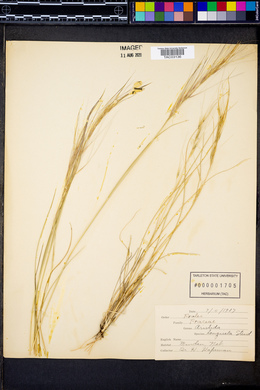
|
|
|
|
Family: Poaceae
Fendler threeawn, more...red threeawn (es: tres barbas rojo)
[Aristida curtiseta Buckley, moreAristida fasciculata var. nuttallii Thurb. ex Beal, Aristida longiseta Steud., Aristida longiseta subsp. rariflora Hitchc., Aristida longiseta var. rariflora A.S. Hitchc., Aristida longiseta var. robusta Merr., Aristida purpurea subsp. robusta (Merr.) Piper, Aristida purpurea var. robusta (Merr.) Piper, Aristida rariflora (Hitchc.) Henrard] |
Culms 10-40(50) cm. Leaves sometimes mostly basal, sometimes mostly cauline; blades 4-16 cm, usually involute. Panicles 5-15 cm; primary branches appressed or ascending at the base, without axillary pulvini, stout andstraight to delicate and drooping distally, usually neither flexible nor tangled. Lower glumes 8-12 mm; upper glumes (14)16-25 mm; lemmas 12-16 mm long, apices 0.3-0.8 mm wide; awns subequal, 40-100(140) mm long, 0.2-0.5 mm wide at the base. 2n = 22, 44, 66, 88. Aristida purpurea var. longiseta grows on sandy or rocky slopes and plains, and in barren soils of disturbed ground from western Canada to northern Mexico. It is the most variable variety of Aristida purpurea, ranging from short plants with basal leaves and short panicles suggestive of var. fendleriana, to tall plants with long cauline leaves and long, drooping panicles resembling var. purpurea. The length of its glumes, width of its lemma apex, and the length and thickness of its awns distinguish it from all the other varieties. The callus and long, stiff awns are especially troublesome to sheep and cattle. FNA 2003, Allred 1984 Common Name: Fendler threeawn Duration: Perennial Nativity: Native Lifeform: Graminoid General: Low to moderately tall tufted perennial, dense stems 10-35 cm, occasionally 50 cm tall. Vegetative: Blades firm, involute, short and in dense basal tuft, 1-2 mm wide, 3-15 cm long and scattered on stems; collar margins villous; sheath open, rounded, ligule short ciliate, about 0.5 mm long. Inflorescence: Flexuous or stiffly erect, contracted or open with slender, spreading to drooping, few-flowered branches, usually paniculate; 6-12 cm long often reduced to 2-6 flowered raceme; spikelets on slender, short or long pedicels; glumes unequal, first often only as half as long as second, second 16-25 mm long, occasionally less; lemma 12-15 mm long, thick to base of awns, awn column obsolete or short, thick, slightly twisted; awns 4-8 cm long. Ecology: Found on rocky plains, plateaus, and hills from 4,000-6,000 ft (1219-1829 m), rarely down to 2,000 ft (610 m). Distribution: SW US to c MEX. Notes: Most variable variety of A. purpurea but often the one with the longest awns and glumes. Distinguished from other varieties by appressed panicle branches, awns 35-140 mm and the bunches of notably thin, tightly rolled leaves. Ethnobotany: Used as forage, for broom material, hairbrushes, and ceremonially. Etymology: Aristida is from the Latin arista for awn, while purpurea is Latin for purple, longiseta means long-bristled. Synonyms: Aristida longiseta, A. longiseta, var. rariflora, A. longiseta var. robusta, A. purpurea var. robusta Editor: SBuckley 2010, FSCoburn 2015 |


